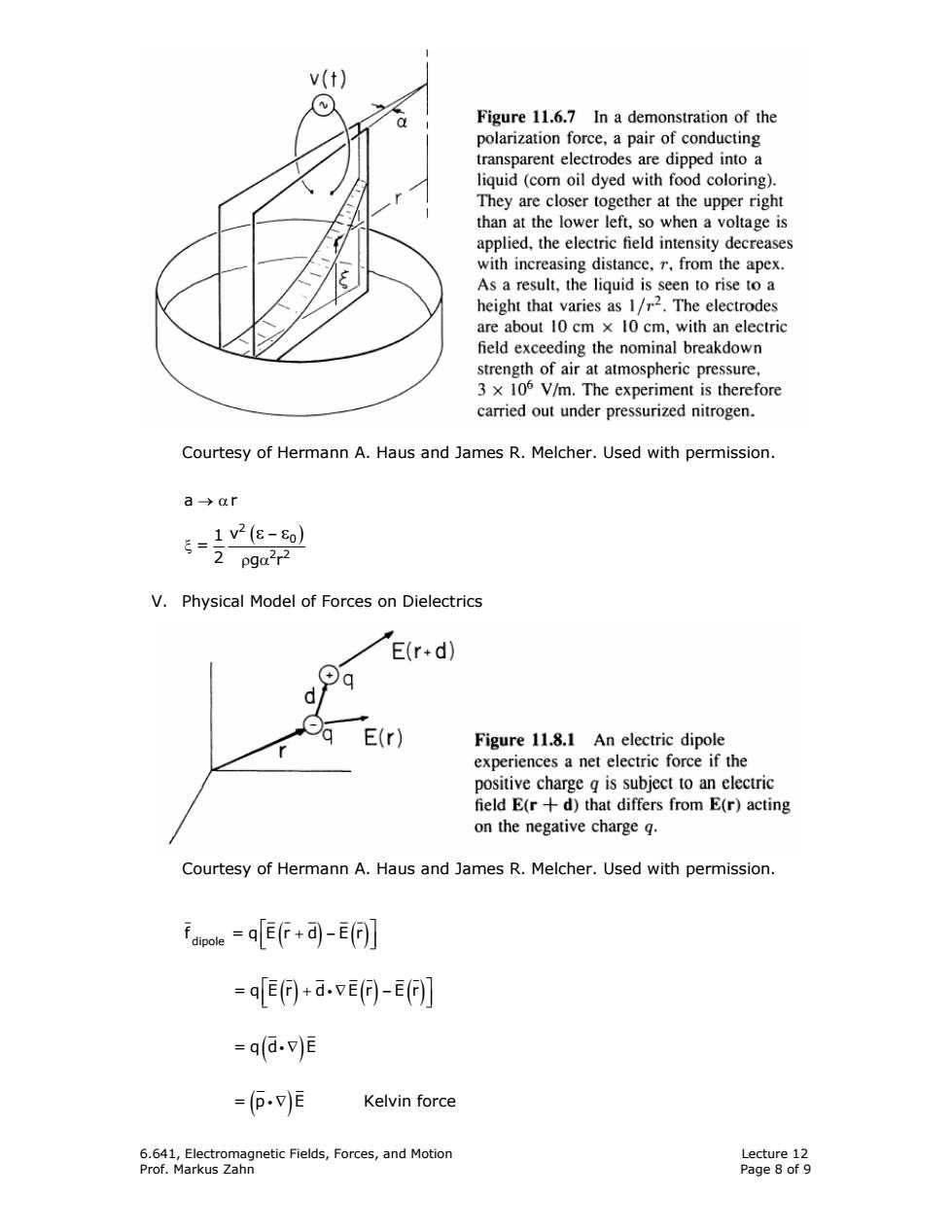正在加载图片...

v(t) Figure 11.6.7 In a demonstration of the polarization force,a pair of conducting transparent electrodes are dipped into a liquid (corn oil dyed with food coloring). They are closer together at the upper right than at the lower left,so when a voltage is applied,the electric field intensity decreases with increasing distance,r,from the apex. As a result,the liquid is seen to rise to a height that varies as 1/r2.The electrodes are about 10 cm x 10 cm,with an electric field exceeding the nominal breakdown strength of air at atmospheric pressure, 3 x 10 V/m.The experiment is therefore carried out under pressurized nitrogen. Courtesy of Hermann A.Haus and James R.Melcher.Used with permission. a→ar 5=1v2e-o) 「2pga2r2 V.Physical Model of Forces on Dielectrics E(r+d) d E(r) Figure 11.8.1 An electric dipole experiences a net electric force if the positive charge g is subject to an electric field E(r+d)that differs from E(r)acting on the negative charge g. Courtesy of Hermann A.Haus and James R.Melcher.Used with permission. fpoe=q[E(G+d-E间] =q[E间+ā.E问-E(何)] =q(d.v)E =(何.) Kelvin force 6.641,Electromagnetic Fields,Forces,and Motion Lecture 12 Prof.Markus Zahn Page 8 of 96.641, Electromagnetic Fields, Forces, and Motion Lecture 12 Prof. Markus Zahn Page 8 of 9 Courtesy of Hermann A. Haus and James R. Melcher. Used with permission. a r → α ( ) − ξ ρ α ε ε 2 0 2 2 1 v = 2 g r V. Physical Model of Forces on Dielectrics Courtesy of Hermann A. Haus and James R. Melcher. Used with permission. ( ) ( ) ⎡ ⎤ + − dipole ⎢ ⎥ ⎣ ⎦ f =q E r d E r ( ) ( ) ( ) ⎡ ⎤ +∇ − ⎢ ⎥ ⎣ ⎦ =q E r d E r E r i =q d E ( ) i ∇ =p E ( ) i ∇ Kelvin force